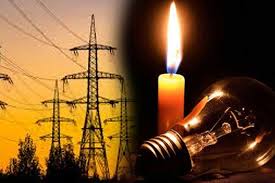
(Lanka-e-News -09.Feb.2025, 10.30 PM) The Ministry of Power stated that a sudden issue at the Panadura Grid Substation, which is under the Ceylon Electricity Board (CEB), caused an imbalance in the national power supply system, leading to a widespread power outage across the island. Below is a note shared by an individual regarding the incident.
The System Control Centre of the Ceylon Electricity Board is responsible for managing and monitoring every power plant in Sri Lanka that generates more than 10 megawatts, along with the high-voltage power transmission systems of 132 and 220 kilovolts. As you may know, electricity demand fluctuates throughout the day, and this is a real-time system. This means supply and demand must always be balanced. If not, the system will be damaged and eventually fail. The authority to add or remove power from the grid to maintain this balance lies with this control center.
There are two types of electricity: Direct Current (DC) and Alternating Current (AC). The national grid uses AC electricity, which oscillates at a frequency of 50 cycles per second, or 50 Hz. For the system to function properly, the frequency should remain at exactly 50 Hz. If it drops below 50 Hz, it means supply is less than demand; if it rises above 50 Hz, supply exceeds demand. System operators monitor this value 24/7, maintaining it between 49.5 and 50.5 Hz according to Sri Lankan standards.
The system is controlled in two ways: short-term and long-term. For example, if the demand during the day is 1000 megawatts, it can fluctuate between 950 and 1050 megawatts as people turn appliances on and off. To manage this, about 900 megawatts are supplied consistently from various power plants, while one specific power plant is designated as the Frequency Controlling Machine to manage fluctuations. If this plant has a capacity of 200 megawatts, it can adjust its output to balance demand ranging from 900 to 1100 megawatts, depending on frequency changes.
However, during the evening when people turn on lights and watch TV, demand spikes suddenly. In this case, the system operators contact various power plants to increase supply accordingly. If there’s any remaining imbalance between supply and demand, it’s adjusted by modifying the output of the frequency control machine.
Today, a rare incident occurred. A significant imbalance in the main operating system led to a total system collapse. When this happens, the entire power supply to the grid is cut off. The system cannot withstand such a sudden drop, and there's no time to react. It’s an instantaneous event, and no other power plant can compensate for this loss quickly enough.
As a result, the frequency, which should be maintained above 49.5 Hz, started dropping rapidly—48, 47, 46, 45 Hz, and so on. When this happens, for the protection of the entire system, all power generators automatically shut down. The entire network goes silent. Even power stations rely on emergency diesel generators during such events.
Restarting a collapsed grid is a delicate process. The system needs to be reconnected carefully while maintaining the balance between supply and demand, otherwise, it will collapse again. This is what is currently underway.
I’ve explained this in the simplest terms to help you understand what happens in a power system. No matter how many “experts” share their opinions, providing electricity to a country isn’t as simple as connecting a wire to a battery and lighting a bulb. Only those directly involved in managing the system truly understand the complexities. To be honest, my own knowledge is quite limited.
---------------------------
by (2025-02-09 16:59:21)
Leave a Reply